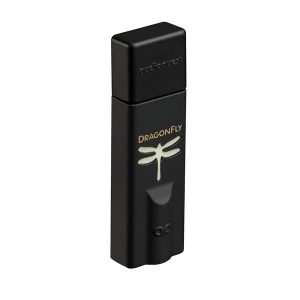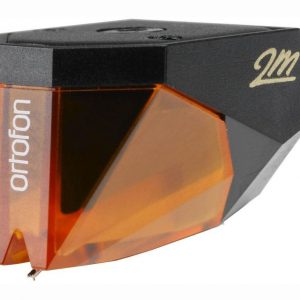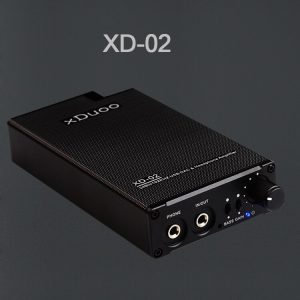- Beschrijving
- Extra informatie
- Beoordelingen (1)
- Help
Beschrijving
Beschrijving
SKOLL BALANCED, DISCRETE MM/MC PHONO PREAMP WITH REMOTE CONTROL

Wait a sec, you don’t have to turn this one over to change gains like Mani 2?
Nope! Do it from your chair with the remote control. You can also change inputs, tweak resistive and capacitive loading, and enable the subsonic filter without getting off the couch. And yeah, we know, we’re the reason you don’t get enough exercise.
Yeah, but that’s just remote control. Everyone knows a great phono preamp has to be painful to use, right?
Why?
I mean, you must have made some compromises for the remote?
Nope. Skoll is simply the highest performance, most flexible balanced phono preamp out there—and it’s also the least expensive. And it has a remote.
Least expensive too? There must be something amiss here!
Yes. Yes there is. What’s amiss is many, many audio products are overpriced, either deliberately or accidentally (like by making just a few, so you get no economies of scale), and most companies don’t want to try too hard on niche things like phono preamps, which makes them even more likely to be overpriced. So we decided to blow up the phono preamp world a bit.
No I mean there’s gotta be something amiss with your Skoll. How can it be so good and so cheap?
It’s good and cheap because we have a lot of experience with audio products, and we’re not averse to building lots of them for economies of scale. But, to break it down, let’s talk about what Skoll offers, and you can make your own decision if something is missing:
- Balanced. Skoll is balanced and differential all the way through. Of course you have the choice of both balanced and single-ended inputs and outputs.
- Discrete. Skoll is discrete. For real. Like in this chapter. As in, individual transistors, capacitors, resistors, all the way through, in a unique topology we call Equipoise.
- No feedback. Skoll uses complementary pairs of bipolar transistors to keep distortion tamed. That means there’s no need for feedback. Anywhere. No feedback in either gain stage, and a passive RIAA network in-between. That’s it.
- High voltage rails. Skoll runs on 64V rails to further increase linearity, which also means it has huge headroom and overload margin.
- Relay switching, gain, and loading. There are no electronic switches or other shortcuts in the signal path. All input switching, gain switching, and loading are done by precision relays, controlled by a microprocessor running custom firmware.
- Uber-quiet power supply and microprocessor. The power supply is dual regulated for extremely low noise, and the microprocessor itself sleeps between commands, its clock turned off to eliminate any potential interference.
- Remote control. Since there’s a microprocessor running all those relays, it’s easy for us to give you remote control. So sit back and click through the loading, select from two different turntables, change gain (up and down), and turn on and off a two-pole LF filter.

Holy moly! All that? There has to be something you cheaped on.
Only maybe the wall-wart transformer, but even that’s great because it keeps the rest of Skoll away from its inherent magnetic field. That means its quieter—quieter than Mani 2 in most modes, and Mani 2 is insanely quiet.
Aha. How does it compare to Mani 2?
In short, it doesn’t. Mani 2 is a great, inexpensive, entry-level phono preamp that has excellent flexibility and delivers high performance, but Skoll is a whole ‘nother level. Discrete, balanced, remote—it’s on another planet. If it’s in the budget, Skoll is a no-brainer.
I noticed that Mani 2 has better measured distortion than Skoll.
Yep! It does that thanks to tons and tons and tons of feedback in the op-amp gain stages. Skoll, as a no-feedback design, can’t compete. After all, it only has 4 gain transistors per channel. Op-amps may have hundreds. (Thousands? Not sure. Lots, in any case.)
And Skoll’s higher THD doesn’t bug you?
We’re not worried about Skoll’s higher THD, because, let’s face it, it’s still going to be orders of magnitude lower than the inherent distortion of the music pressed into the vinyl, the cartridge, and your headphones or speakers. That’s the reality.
Okay, moving on: how come you don’t have 180 different cartridge loads?
Because that’d mean a ton more relays, a lot more switching, a lot bigger chassis, and a lot higher price tag. We chose the most typical MC loads for R and C, and stuck with the standard 47k/50pF for moving magnet.
Hmm, well, how does this balanced thing work? Are there balanced turntables out there?
Yes, though they are rare. We provide single-ended inputs as well, so no worries on compatibility.
I have a balanced turntable with a weird/nonstandard connector, not two good Neutrik XLRs. What do I do?
There are conversion cables from nonstandard/weird balanced turntables to the industry standard Neutrik XLR. You’ll need one of them.
I see this has a subsonic filter like Mani 2.
Er, well, yeah, kinda-sorta. Except this one is just on or off, a single 12dB/octave passive filter with a shallower roll-off than a typical active filters. This was the best trade-off, we believe, between an active subsonic filter or no filter at all. And you can bypass the LF filter entirely, in any case.
I have an inexpensive entry-level turntable with a good moving-magnet cartridge. Is Skoll for me?
Maybe. It definitely provides great performance now, and it will scale wayyyyyyyyy up if you end up getting the phono bug and want to go farther.
I have a mid-priced turntable with a $350 MC cartridge. Is Skoll for me?
Absolutely. It provides insane performance at that level, and it can connect via single-ended or balanced from the turntable, and provide single-ended or balanced outputs, for maximum flexibility.
Well, you know, I’m very serious about vinyl, I have a $5,000 tube phono stage and a $15,000 turntable with a $2,500 cartridge. Is Skoll for me?
Try it. It might surprise you. Or depress you. Seriously, though, Skoll is a great phono preamp.
I don’t understand all the settings.
That’s all right. For most systems, you’ll be running typical “moving magnet” settings—as in, 47k/50p loading, lowest gain. Turn on the LF filter if you notice your woofers moving slowly in and out due to warped records or platter wobble. That’s it. When and if you change to a moving coil cartridge, you can experiment with loading and gain settings from the comfort of your chair. You can’t hurt anything by changing loading (though some may sound better than others), and, as long as you step through the gains one at a time, you can’t hurt anything there either. Feel free to experiment and find the best results!
What is Skoll?
SPECS THAT MATTER
Gain: enough for all turntables, all cartridges
Noise: insanely low for a turntable, you’ll be hearing the pops not the hiss
Distortion: 10-100x lower than any record you’ll play
Heat: top gets moderately warm; nothing to worry about, we make stuff that runs waaaaaay hotter for years and years
Size: smaller than a typical rack product, but probably not small enough to hide behind the turntable
OTHER SPECS
Gain: 40db
THD: <0.006%, ref 4V RMS balanced, 2V RMS SE
SNR: >102dB, A-weighted, ref 4V RMS balanced, 2V RMS SE
Crosstalk: -100dB, 20-20kHz
Sensitivity: 2.85mV for 300mV output at 1kHz
Extra informatie
Extra informatie
| Kleur | Black |
|---|





















Frederik van Heeswijk (geverifieerde eigenaar) –
Afwerking ziet er niet al te goedkoop uit. Heen- en weer gaande kerstboom van lichtjes begint irritant te worden. Verder interessant ontwerp; over het algemeen zeer goede prijs-prestatieverhouding.